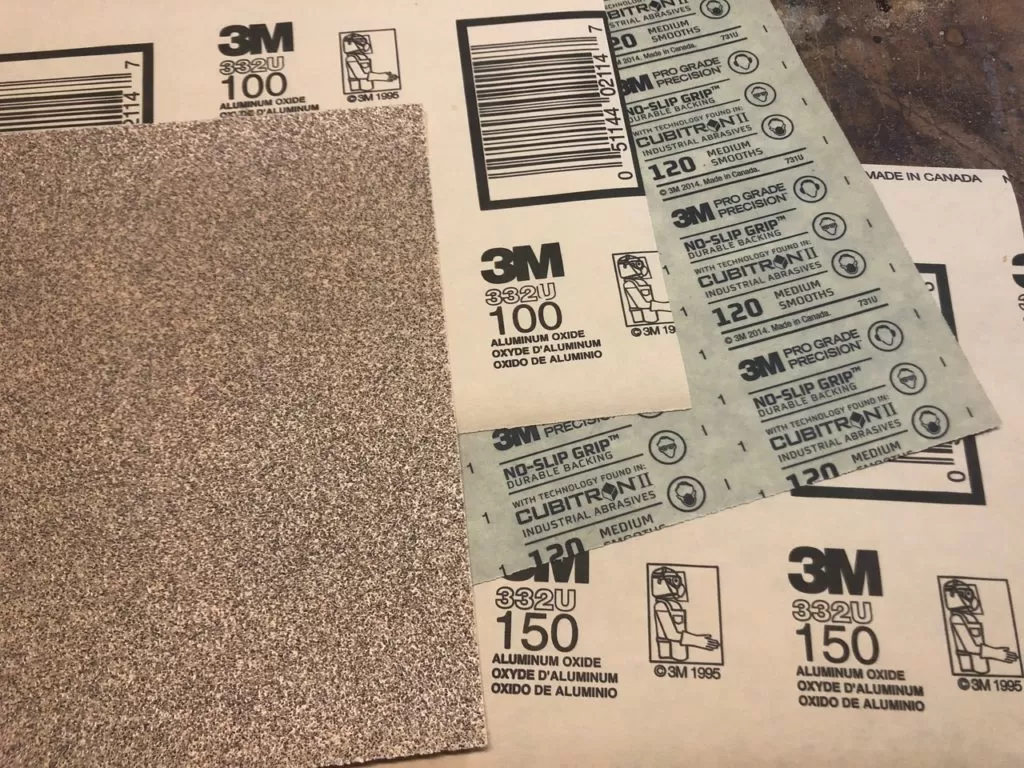A Primer on Abrasives
by Bruce Johnson
If you own a piece of furniture, sooner or later you are going to need to know what type of abrasive you need to care for it.
Here, then, is a brief summary of your options.
SANDPAPER
Sandpaper is rated by a “grit” system. The lower the number of grits, the coarser the paper. Any sandpaper rated below 100 grit is extremely coarse and should only be used to remove wood or thick layers of finish, such as is found on a floor or a painted piece of furniture.
Grits between 100-200 are considered medium and are used to prepare bare wood by removing shallow scratches and opening the pores before you apply a stain and/or finish. Grits between 200-300 are most often used to lightly sand between coats of finish. Anything above 300 is reserved for wet-sanding a final coat of dried finish to polish off specks of dust.

Typically, a bare piece of furniture would first need a preparation sanding with #100 or #120 grit, followed by a sanding with #180 grit, always sanding only in the direction of the grain of the wood to avoid leaving unsightly cross-grain scratches.
After your first coat of finish has completely dried, lightly sand the dried layer with #220 grit before applying a second coat. You can wet-sand the final coat of dried finish with #400 grit liberally moistened with a furniture oil, polish, or water, although I prefer a synthetic pad for the final rub out.
Your last step would be to buff off any remaining oil, polish, water, or wax with an absorbent, soft, clean cloth.
STEEL WOOL
Steel wool is divided into eight different categories from #4 (extremely coarse) to #0000 (very fine). Coarse steel wool is most often used when stripping off an old finish using a paint and varnish remover. The finer grades (#00 and #000) of steel wool are reserved for dry-rubbing between coats of finish or wet-rubbing a final finish using #0000 dipped in a furniture oil, polish, or wax (but not water!).

Steel wool has some disadvantages. It easily penetrates vinyl gloves and skin, leaving irritating splinters. It is flammable and rusts easily when damp. It can also leave rust spots on wood, especially oak. It also falls apart under pressure, so it becomes messy very quickly.
Read on for a better alternative.
SYNTHETIC PADS
These pads come in three or sometimes four different ratings, from coarse to fine, and are used like or in place of steel wool. They last longer than steel wool, are safer for your skin, and don’t fall apart.

I use them almost exclusively over steel wool. Like steel wool, synthetic pads are not a replacement for sandpaper, as they are not designed to actually remove wood, but are great for rubbing out a final finish when dipped in a furniture oil, polish, or wax.
Bruce Johnson
Author of “The Weekend Refinisher,” “The Wood Finisher,” and “The Pegged Joint.”

